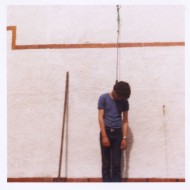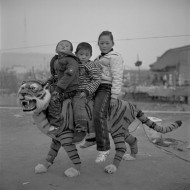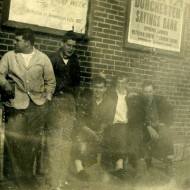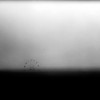Ch’ng Yaohong is a young photographer based in Singapore.
In addition to photographing for his personal projects and for commission works, Ch’ng Yaohong is also the author of one of my favourite weblog, Asian Photography Blog, and it is easy to understand why. Ch’ng Yaohong site is about two of my great nowadays passions: Asia and photography. Every week you can discover splendid works and incredibly talented photographers, most of the time completely unknown in Europe, even to a specialized audience. Sometimes the blog of contemporary art and photography repeat the same authors, the same styles, the same approach, the same vision of the world. The blog by Ch’ng Yaohong in the current blogsphere is a nice example of novelty and differences.
For these reasons I was very happy when Ch’ng Yaohong agreed to participate in an interview that discusses photography in Asia in general and his personal photographic work.
Fabiano Busdraghi: In the Occident word it is now difficult to speak about a European or American photography, contemporary photography is extremely varied. Do you think that photography is pretty uniform and consistent in Asia? Is it characterized by a fundamental uniformity, or contrary is it as varied and diverse as in the West?
Ch’ng Yaohong: From my experience in running the Asian photography blog, I have seen works that vary across different cultures and nations. Asian photographers have very diverse styles, concepts and shoot in so many genres. I believe that it is as diverse, if not more so than work coming from Europe or America. Many photographers return from education outside of Asia and they bring with them the distinctive styles or approaches of their adopted countries. Even within Asia, different countries have their own approaches to photography. This is especially so in Japan, where photography has had many decades of tradition. If one was to enter a room filled with photography from the world, it may be easy to identify the various geographical locations based on subject matter but ultimately, the photographer behind it could easily have been Asian, American, European or African!
Fabiano Busdraghi: These differences are mainly due to personality or to the photographers origins? Do you think that one can talk about a Chinese, Indian, Japanese, Thai… photography? Or a distinction based on the countries nowadays makes little sense, and is the personality of photographers who counts?
Ch’ng Yaohong: In every country, photographers work in different ways and it is hard to categorize them in this manner. The subject matter or political background may be the same but it is the photographer’s personality, life experiences and thought processes that shape his/her works. Traces of a country’s history and culture may be infused into certain works but the individual makes all the difference. The stylistic differences may be different, Japanese photographers tend to shoot street photography in the same manner due to heavy influence by Daido Moriyama, Indonesian photojournalists cover the same events as their Western counterparts; yet each image is the distillation of the photographer’s mind and soul and it is futile to say that a particular photographer’s work is Chinese, Indian or Japanese.
Fabiano Busdraghi: Do you think that Asian photography is fundamentally different than the western one? Or today is the contemporary photography global around the world? Is it now impossible to speak about photo “schools” based on country of origin of the photographers?
Ch’ng Yaohong: I would dare say that specific countries have their own schools of thoughts but the Internet has blurred boundaries between the schools. Globalization plays a huge role in how people thing. We are becoming more westernised; we eat the same kind of food, get exposed to the same kinds of media. Moreover, many Asian photographers are schooled in America or Europe and have adopted similar ways of thinking and seeing. They then infuse their own cultures into their work when they return home. Fundamentally, photography is photography. Schools of thoughts dictate how an individual may approach a subject but it is the individual that makes the difference.
Fabiano Busdraghi: In Asia traditions are very important, the past still has a very strong weight. As regards China, the country of which I know better the culture, ideas and philosophical theories of art have always confronted with the past, constantly reinventing it, but always starting from the tradition. Over the last century, however, the situation seems to have reversed. It almost seems that Asian countries run a race to deny their past, to innovate, to discover a new modernity, to make a great leap forward. In recent years instead, always in China, there has been a return to the roots and traditions.
Do you think that photography in Asia follow a similar path? Do you think tradition and evolution are equally present, or either one of these aspect is predominant?
Ch’ng Yaohong: I think that the new generation of photographers in China are scrambling to reclaim their traditions due to the Cultural Revolution. Cynically, I would say that they are taking advantage of that to enter the Western art markets, as that is what consumers demand. China’s situation is different from other Asian countries as it is moving forward at great speed, seeking to become a global superpower. This creates an imbalance as the past is quickly wiped out to make room for the future. Some photographers are looking for ways to connect the disconnected, to actively look at the past and make criticisms of the country’s direction.
Despite this, many countries have rich traditions and cultures that have endured millennia, which is being wiped out by a homogenization of culture. Yet, I think that many photographers and artists are striving very hard to preserve their own cultural identity; to make statements against the blatant erasure of one’s past.
I see a greater confluence of photography and tradition recently. While some photographers romanticize about the past, others use it as a springboard to create something new. I think that it is important for us to know about our past, before we can move forward. However, we cannot allow ourselves to be bound by it, refusing to accept new ways of thinking or working. Tradition and evolution exist hand in hand, it all depends on the individual artist. I wouldn’t say that one takes precedence over the other but they are surely mutually influential.
Fabiano Busdraghi: Who are the Asian photographers whose work you consider more interesting?
Ch’ng Yaohong: You just have to visit my blog! I only feature work that I find interesting.
My preference changes every year depending on what I am currently working on. I like work that is unsettling, things out of the extraordinary. There’s just too much pretty work out there.
Fabiano Busdraghi: Can you describe the panorama of contemporary art photography in Asia? The exhibitions, festivals, cultural events are frequent and followed? The states subsidize the artistic photography?
Ch’ng Yaohong: There are so many events happening across Asia that the sheer number overwhelms me. There’s a plethora of festivals happening every year: Chobi Mela in Bangladesh, Fotofest Beijing and Pingyao International Photography Festival in China, Angkor Photography Festival in Cambodia, Thailand’s Month of Photography, Singapore’s Month of Photography and the inaugural Singapore International Photography Festival. This is excluding the numerous exhibitions across the various cities happening every day in Tokyo, Shanghai, Beijing, Manila and New Delhi. Frankly, I think it’s impossible to be there for every single event! I’m not particularly sure about state subsidies in other countries but in Singapore, the National Art Council provides monetary assistance for large nation-wide events.
Fabiano Busdraghi: Here in Europe a lot of people says that the photo industry is now going to Asia, and that in Europe there is almost no more place for business. How is the situation concerning commercial photography in Asia? Can you find good assignments and under which conditions?
Ch’ng Yaohong: There is definitely work to be done here ranging from editorial to advertising work. Photojournalism is well and strong here, especially in places where social strife is prevalent. It’s pretty much how good you are and the people you know that gets you the assignments here. However, margins are increasingly being pushed down due to the proliferation of digital photography. People purchase a digital SLR and turn into a professional instantly. As supply outweighs demand in the lower rungs, profit margins are lower and competition tougher. But at the top, the big names still command impressive prices.
Fabiano Busdraghi: Same of the last two questions, but more particularly as regards Singapore, the city where you live. Is there a lot of gallery, expositions, museum, festival dedicated to photography?
Ch’ng Yaohong: Singapore is starting to open up artistically over the past few years and I’ve seen an increasing number of exhibitions being held here. Also, big gallery names like Valentine Willie are setting base here to tap the emerging art market. Also, the government is pushing for the arts to take off here, with an increased focus on art education.
This year’s inaugural Singapore International Photography Festival (of which I played a small role) was perhaps the biggest photography event I have witnessed here. The Month of Photography organized by the French Embassy is well into its third year. Even the National Museum has started to promote photography in its latest Seasons of Photography, showcasing work by Magnum photographer Chien-chi Chang and American Robert Wilson. I believe that as Singapore progresses towards becoming a renaissance city, we would be seeing more galleries opening and events happening within our small city-state.
Fabiano Busdraghi: A few more personal questions. What is your history as a photographer? How did you come closer to photography?
Ch’ng Yaohong: Like most photographers, I picked up a camera when I was 10 or 11 and made my father buy me an SLR when I was 13. I spent the next 3 to 4 years in the darkroom developing my own pictures and it was an on-off affair when I got into junior college. After that, I was in the army for 2.5 years, where I saved up enough to get myself a digital kit back in 2005. I had just started freshman year in the university. A few months later, I managed to get into Objectifs’ Shooting Home workshop, a mentorship program aimed at developing local talent. That was the turning point for me, as I was introduced into a larger world of photography.
I started freelancing in between lessons, while concurrently heading my school’s photography society. I also had a few group shows and I only started writing about photography last year in 2007. As I am attending a business school, I had to learn many things through my own reading. I devoured books on critical theory, photo history, art history and contemporary art. The web helped a lot as I was introduced to contemporary photography from all over the world; especially from Jörg Colberg’s, Conscientious, and Alec Soth’s now defunct blog.
Fabiano Busdraghi: What is photography for you?
Ch’ng Yaohong: An exhilarating way to meditate on life.
Fabiano Busdraghi: What are you working on? What are your current and future projects?
Ch’ng Yaohong: Right now I’m shooting a portraiture series that seeks to explore the individual’s reaction to life’s many uncertainties. I’m also revisiting my previous series on rubbish left behind by people. Next year, I hope to embark on a series to explore my own heritage, which will take me through Malaysia and China.
Fabiano Busdraghi: In addition to shoot your own photography, as we said before, you also write a blog devoted to photography in Asia. What prompted you to write about photography?
Ch’ng Yaohong: Basically, I was setting up my online portfolio and was looking at ways to differentiate myself from the masses. I enjoy writing (I’ve been blogging before it was called blogging back in 1998) and loved to discover work on the Internet. Like a collector, I would save images and link of works that interest me. I saw what Jörg Colberg and Shane Lavalette were doing and it struck me that nobody was writing about photography in Asia. Since I’m bilingual in English and Chinese, I thought that I could do something more. I had everything cobbled together in a month and launched it in Aug 2007. I think I started gaining traction after 3 months and the rest, as they say, is history.
Fabiano Busdraghi: Do you believe that the blogging activity is useful for photographic career, the two activities are closely related or completely different? Does your blog has allowed you to find interesting contacts, both human and professional?
Ch’ng Yaohong: Haha! I think it’s rather detrimental actually. I’m known more as a writer/blogger now than a photographer. I haven’t gotten any commercial assignments off my blog but many parties have approached me to write about photography.
However, it has been an excellent conversational topic and I have made many contacts and friends off the blog. I get to shuttle between the different cities and there’s always somebody to show me what’s happening in the photographic scene there.
I’ve just started writing my own column in the Singapore Art Gallery Guide. I’m still waiting for someone to approach me to publish a book on Asian photography though!
Fabiano Busdraghi: Exactly the same that happened to me! A lot of work, a lot of time spent writing and studying. But at the same time a lot of personal learning, some virtual friends, a lot of contacts and thoughts exchange with interesting people. And this what I really prefer in Internet.
Do you think that nowadays internet can substitute the traditional diffusion channels of photography? Or it is still essential to expose in the real world?
Ch’ng Yaohong: Essentially, it is easier for photographers to show their works on-line now. They are granted an audience without much costs. However, I still prefer looking at photographs in galleries and books. Nothing beats seeing a well-printed photograph on a gallery wall. Having a solo exhibition is still the dream of many and it is a form of saying that one has finally arrived.
Fabiano Busdraghi: Some questions about your personal tastes: what music are you listening? What are your favourite books and movies?
Ch’ng Yaohong: I listen to quite an eclectic mix of music, which depends on my mood. I tend to gravitate towards music where lyrics are not that important, as my aural abilities are not very well developed. I find Icelandic bands such as Mum and Sigur Ros to be oddly inspirational. But I’m a big fan of Damien Rice.
I’m an avid reader and my favourite fiction authors include Haruki Murakami, Neil Gaiman and Jonathan Safran. I also read non-fiction books on finance and economics but I totally detest my textbooks. Right now, I’m starting to get into poetry and philosophy again. I’m also quite the movie addict! Some of my favorite movies are Eternal Sunshine of the Spotless Mind, Pulp Fiction, Amelie, Fight Club and Donnie Darko.



































L’aver scoperto il tuo blog, Fabiano, è stato un cambiamento radicale per i miei “preferiti” di internet. Adesso il mio Safari ha una cartella in più e il 90% degli indirizzi contenuti sono rubati a te. E per questo ovviamente ti va uno smisurato ringraziamento!
Nel passato, nelle altre arti, si parla spesso di scuole e stili. Probabilmente perché per arrivare a certi livelli era necessario imparare presso un maestro che infondeva il proprio stile e la propria visione oltre che alle arti in sé. Leggendo le domande sulla scuola asiatica, pur sapendone zero, mi sentivo di anticipare le risposte così come sono state date. Certo, le personalità più importanti finiscono per influenzare quelle acerbe, creano degli standard estetici che vengono seguiti in maniera più o meno conscia. Forse la facilità con cui la tecnologia ha reso possibile l’ottenere una fotografia, la democraticizzazione della fotografia diceva Di Lorenzo, ha fatto si che sia estremamente più facile apprendere le tecniche di base magari stesso su interrnet o comunque in modo autonomo, e così ognuno sviluppa il proprio stile in base alle proprie esperienze e ai propri gusti, influenzato poco da un “maestro” quanto dal suo stesso essere e dalle esperienze della sua vita.
A degli studenti italiani venne proposta una fotografia di Venezia scattata nel primo mattino di una qualsiasi giornata da G.B. Gardin, nella quale si vedeva la grande piazza S.Marco ed un solitario spazzino. Questi ragazzi dissero semplicemente che era un comune spazzino nell’atto di pulire in una uggiosa mattina.
La stessa foto fu mostrata a studenti cinesi, i quali risposero che era il cittadino addetto a pulire la piazza per i suoi concittadini (non sono queste le parole esatte ma è all’incirca cosi).
E così, da quando ho saputo questa cosa, mi piacerebbe sapere cosa vedono gli stranieri guardando ogni cosa del “nostro” mondo…
Ciao Claudio,
e grazie mille per i complimenti. Oltre a far piacere sono un buono stimolo per continuare, visto che sempre più spesso mi interrogo sulla reale utilità di Camera Obscura.
Quello delle scuole è un punto molto complesso. Come spero sia chiaro le mie domande a Ch’ng Yaohong volevano soprattutto servire da stimolo per conoscere le sue opinioni, piuttosto che dichiarare le mie.
In ogni caso, e qui mi riallaccio anche a Danx, anche io come lui credo che oggi le scuole trascendano i confini fra i paesi. Però mi interessava in particolare sapere cosa ne pensava per un motivo ben preciso. Spesso quando si parla con i cinesi o a proposito dei cinesi viene tirata in ballo una certa “differenza fondamentale”. Da ambo le parti, sia dai cinesi che dagli occidentali. Dagli occidentali, quando con una certa sufficienza si taccia i cinesi di esseri strani e incomprensibili, da parte dei cinesi per giustificare il loro comportamento. Per esempio il regime tira spesso in ballo una fondamentale “alterità orientale” quando si parla di diritti umani, in modo da giustificare la propria politica e la divergenza dai valori riconosciuti dagli occidentali.
Naturalmente le differenze fra Asia e Europa esistono, ma questa fondamentale separazione fra occidente e oriente quanto è obiettiva e quanto invece è uno schema voluto e facile di pensiero? Quanto è una scelta di comodo? Per quanto òi riguarda è una domanda a cui ancora non so dare un risposta definitiva.
E poi, questa differenza di fondo esiste o no anche nella fotografia? A leggere questa intervista non sembra poi troppo…
Se c’è una cosa che mi stupisce dell’Oriente, è la delicatezza nel rapportarsi alla natura anche da parte di gente comune e invece la brutalità dei regimi.
Tornando al discorso della foto di Gardin, quello che han detto i ragazzi cinesi è molto comunista, ma questo pensiero comunista chissà se è davvero insito nel loro dna o gli è stato ficcato nella mente a scuola
Loro vedono uno che lavora per la collettività, mentre noi occidentali vediamo uno sfigato che lavora al freddo da solo.
You can also subscribe to this post comments RSS feed.